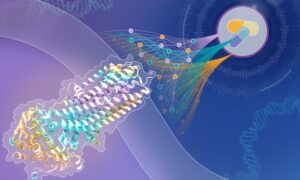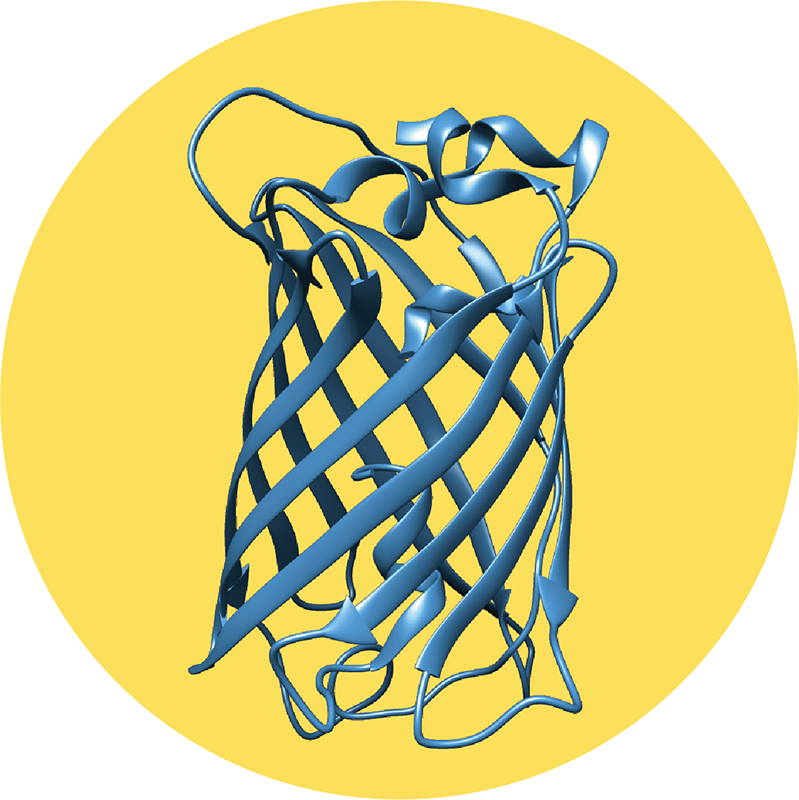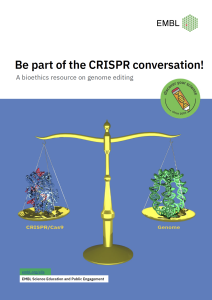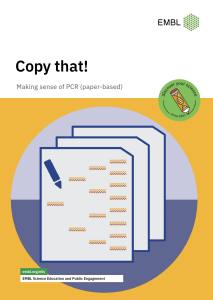
Step 5: Structure of GFP
Overview
In the final part of the activity, we will utilise the Protein Data Bank Europe (PDBe) to visualise an interactive three-dimensional structure of GFP and play around with it.
Your task
Proceed as described below:
- Click on the tab “PDBe”.
- Search for either Green Fluorescent Protein, GFP, or 1GFL.
- Follow the instructions in the “PDBe” tab and try to answer the task questions.
PDBe
- Open PDBe in a separate browser window: https://www.ebi.ac.uk/pdbe/
- In the search box enter either Green Fluorescent Protein, GFP, or 1GFL and hit the “Search” button.
- You have now been forwarded to the green fluorescent protein (GFP) entries in PDBe. If you click on a picture of one of the protein structures you can open an interactive 3D protein viewer (alternatively, click on “View in 3D” and then select the “Astex Viewer”). Please note that you might be asked to grant permission to Java at this stage. You are now viewing a three-dimensional ribbon-cartoon structure of GFP. You can use your cursor to rotate the structure. Selected features (such as type of structural representation or colour) can be modified either by using the menu on the left or by right-clicking on the image.
Questions
Play around with the interactive three-dimensional protein structure and try to answer some of the following questions:
- What does the shape of the GFP molecule look like?
- Can you find the chromophore in the molecular structure?
- What effect can mutations have on the function of the protein?
Activity navigation

Share:
 Čeština
Čeština Français
Français Ελληνικά
Ελληνικά Italiano
Italiano Svenska
Svenska


